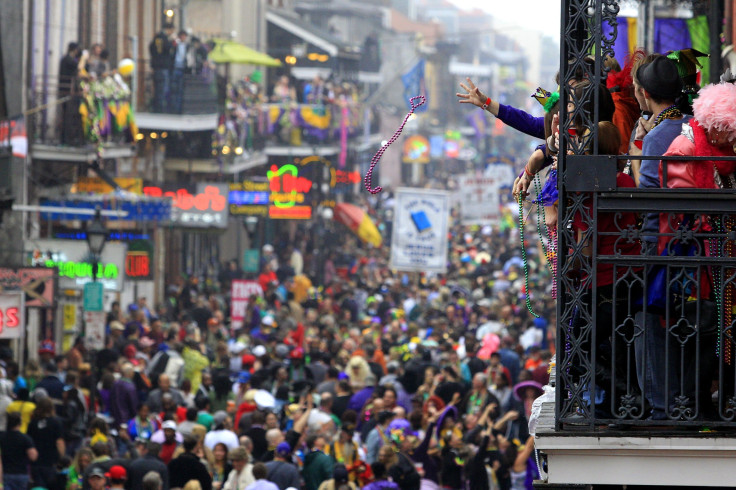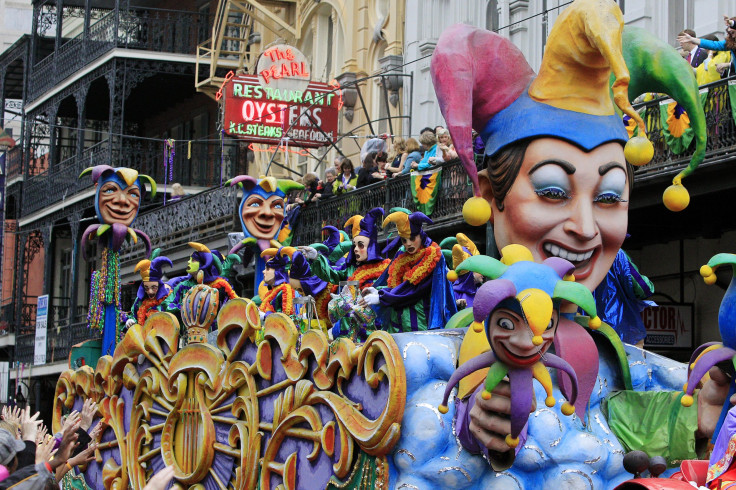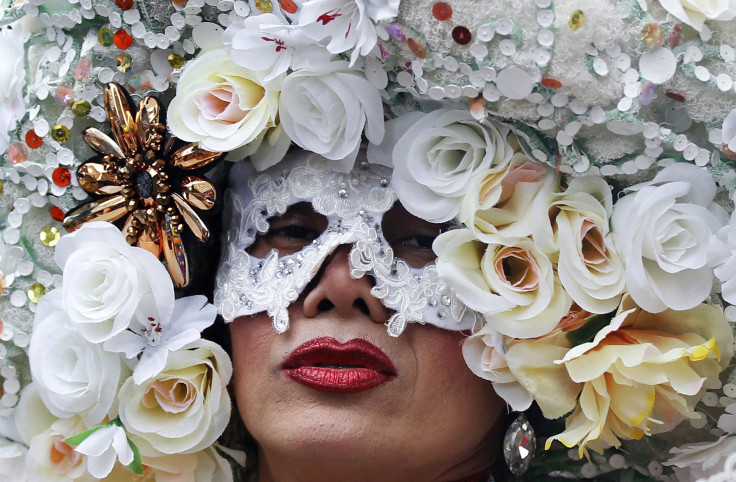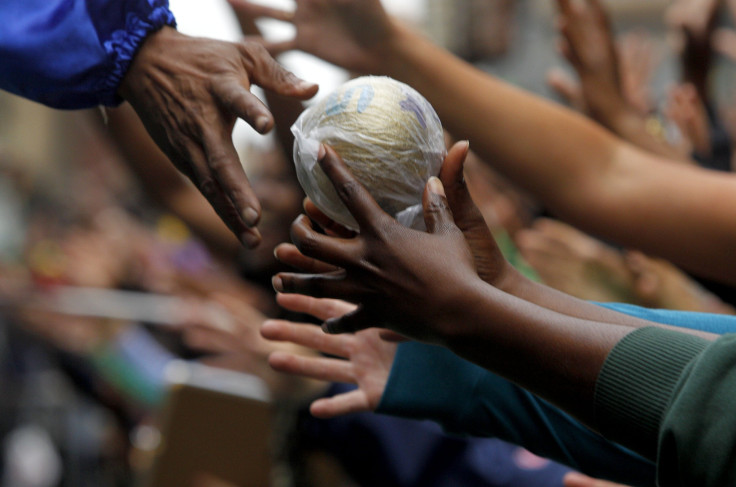Mardi Gras History And Facts: The Real Meaning Behind These 5 ‘Fat Tuesday’ Traditions

This year’s Mardi Gras, a festival marked by an endless cyclone of feathers, costumes, beads and booze that whips through city streets all over the world, is well underway. It’s been called the wildest fete in the U.S., and for good reason: Every year, droves of partygoers flock to New Orleans to take in the floats, the festivities and the food, and to leave their mark on the Big Easy.
Mardi Gras, meaning “Fat Tuesday” in French, has its origins in medieval Europe. What became a legal holiday in Louisiana in 1875 was once a Christian holiday with roots in ancient Rome. Instead of outright abolishing certain pagan traditions, like the wild Roman festivals of Saturnalia and Lupercalia, religious leaders decided to incorporate them into the new faith.
What became known as the Carnival season was a kick-off to Lent, a sort of last hurrah before 40 days of penance sandwiched between Ash Wednesday and Easter Sunday. Eventually, the celebration spread from Rome across Europe to the colonies of the New World.

Since its early days in New Orleans in the early 18th century, Mardi Gras has grown to colossal proportions and includes several familiar traditions, like bead throwing, mask wearing and coconut painting, that are widely practiced today but whose origins may have been forgotten.
Here are the real meanings of five popular Mardi Gras traditions.

The Wearing Of Masks
Masks are an integral part of Mardi Gras culture. During early Mardi Gras celebrations hundreds of years ago, masks were a way for their wearers to escape class constraints and social demands. Mask wearers could mingle with people of all different classes and could be whomever they desired, at least for a few days.
In New Orleans, float riders are required by law to have a mask on. On Fat Tuesday, masking is legal for all Mardi Gras attendees – although many storeowners will post signs asking those entering to please remove their masks first.

The Flambeaux Tradition
Flambeaux, meaning flame-torch, was the tradition of people carrying shredded rope soaked in pitch through the streets so that nighttime revelers could enjoy festivities after dark. They were originally carried by slaves and free African Americans trying to earn a little money. Crowds tossed coins at the torch carriers for lighting the way for the floats.
Today, flambeaux carriers have turned the tradition into something of a performance. Torch bearers dance and spin their kerosene lights – something the original parade planners didn’t intend.
The Throwing Of Beads
The tradition of bead throwing starts with their original colors. The color of the beads was determined by the king of the first daytime Carnival in 1872. He wanted the colors to be royal colors – purple for justice, gold for power and green for faith. The idea was to toss the color to the person who exhibited the color’s meaning.
The beads were originally made of glass, which, as you can imagine, weren’t the best for tossing around. It wasn’t until the beads were made of plastic that throwing them really became a staple of Mardi Gras in New Orleans.

Rex, The King of Carnival
Every year in New Orleans, a king is crowned. His name is Rex, the king of the Carnival, and he first ascended to the throne in 1872. History has it that the very first Rex was actually the Grand Duke Alexis of Russia who, upon a visit to the U.S., befriended U.S. Army officer George Armstrong Custer during a planned hunting expedition in the Midwest.
The Duke’s visit to Louisiana was organized by New Orleans businessmen looking to lure tourism and business to their city following the devastating American Civil War.
Every year, the Rex Organization chooses a new Rex, always a prominent person in New Orleans. He is given the symbolic Key to the City by the Mayor.

Handing Out Zulu Coconuts
The Zulu Social Aid and Pleasure Club is one of the oldest traditionally black krewes – or parade hosts – in Mardi Gras history. The organization is known for handing out Zulu coconuts, or “golden nuggets.” The earliest reference to these coconuts appears in 1910.
The first coconuts were left in their original hairy state, but years later, Zulu members started painting and decorating them. Getting a Zulu coconut is one of the most sought after traditions during Mardi Gras.
© Copyright IBTimes 2025. All rights reserved.






















